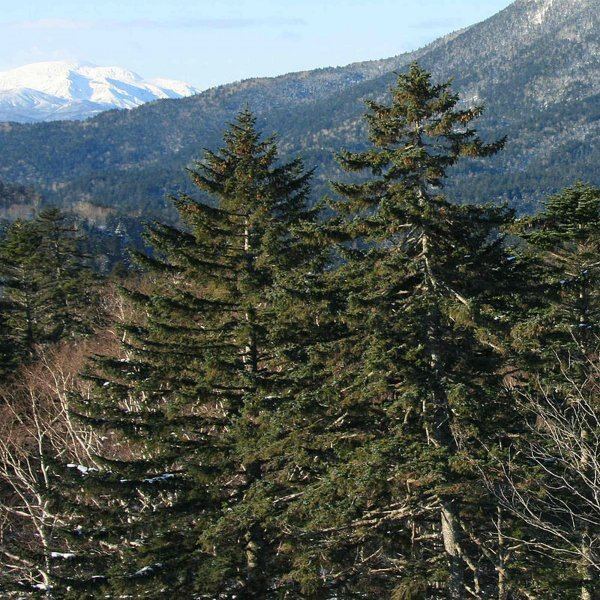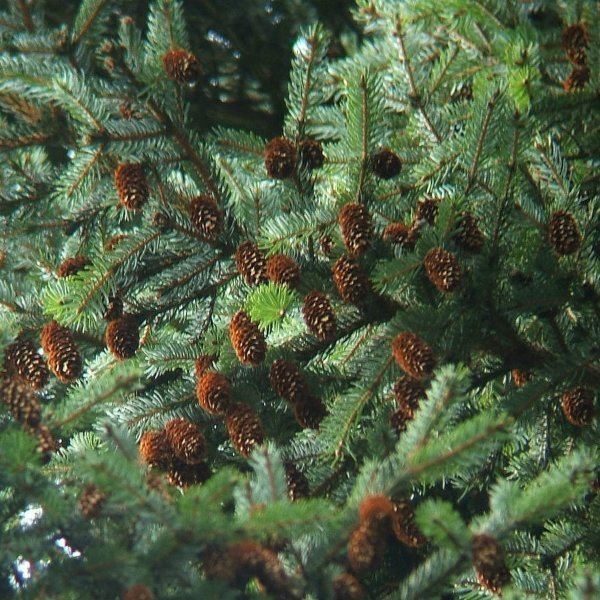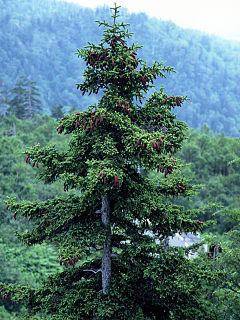Genus Picea Higher classification Spruce | Division Pinophyta Scientific name Picea jezoensis Rank Species | |
 | ||
Similar Spruce, Abies holophylla, Abies sachalinensis, Picea glehnii, Conifers | ||
Japan trip 2015 tokyo bonsai the natural sabamiki picea jezoensis garden showa memorial park
The Jezo spruce or Yezo spruce (Picea jezoensis or Picea yezoensis) is a large evergreen tree growing to 30–50 m tall and with a trunk diameter of up to 2 m. It is native to northeast Asia, from the mountains of central Japan and the Changbai Mountains on the China-North Korea border, north to eastern Siberia, including the Sikhote-Alin, Kuril Islands, Sakhalin and Kamchatka. It is found in cold but humid temperate rain forests, and nowhere does its range extend more than 400 km from the Pacific Ocean.
Contents
- Japan trip 2015 tokyo bonsai the natural sabamiki picea jezoensis garden showa memorial park
- Jezo spruce picea jezoensis tree seeds on www myseeds co
- Usage
- References

The bark is thin and scaly, becoming fissured in old trees. The crown is broad conic. The shoots are pale buff-brown, glabrous (hairless) but with prominent pulvini. The leaves are needle-like, 15–20 mm long, 2 mm broad, flattened in cross-section, dark green above with no stomata, and blue-white to white below with two dense bands of stomata.

The cones are pendulous, slender cylindrical, 4–7 cm long and 2 cm broad when closed, opening to 3 cm broad. They have thin, flexible scales 12–18 mm long. They are green or reddish, maturing pale brown 5–6 months after pollination. The seeds are black, 3 mm long, with a slender, 6–8 mm long pale brown wing.

There are two geographical subspecies, treated as varieties by some authors, and as distinct species by others:
Jezo spruce is very closely related to Sitka spruce (Picea sitchensis), which replaces it on the opposite side of the north Pacific. They, particularly subsp. jezoensis, can be difficult to distinguish, with the absence of stomata on the upper surface of the leaves of P. jezoensis being the best feature. Its leaves are also somewhat blunter, less sharply spine-tipped, than Sitka Spruce.
Jezo spruce picea jezoensis tree seeds on www myseeds co
Usage
Jezo spruce is important in the Russian Far East and northern Japan, for timber and paper production. Much of what is cut is harvested unsustainably (and often illegally) from pristine natural forests.
It is also occasionally planted as an ornamental tree in large gardens.
The Ainu string instrument called tonkori has a body made from Jezo Spruce.
